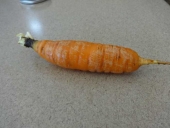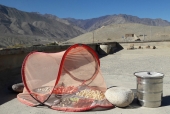
 7
7





 6
6




 4
4




 6
6




 8
8




 8
8




Seed slanging, dirt sniffer

 5
5




 4
4




I am a child of the LIVING GOD, the least in HIS kingdom, a follower of the Nazarene, and a steward of this Earth.
 3
3




 1
1




Zachary Bertuzzi wrote:Hello friends
Years ago my wife's grandfather told me about how his family used to store vegetables, like carrots, in a pile of sand over winter. I thinking about giving it a shot... but in a different way. My thought is to build a large box, line it with burlap (filled with damp sand of course) put vent holes in the sides and top, and then insulate the outside wall and top with bales of straw. This would be in my unheated pole barn and hopefully keep it from freezing. I'm in zone 5b/6a. So it get's pretty cold here.
My question to y'all is, has anyone done the sand storage or any variations similar to my idea? Or if you know of any videos you could send me links to, that would also be appreciated.
thanks!
$10.00 is a donation. $1,000 is an investment, $1,000,000 is a purchase.

|
What I don't understand is how they changed the earth's orbit to fit the metric calendar. Tiny ad:
the permaculture bootcamp in winter (plus half-assed holidays)
https://permies.com/t/149839/permaculture-projects/permaculture-bootcamp-winter-assed-holidays
|


